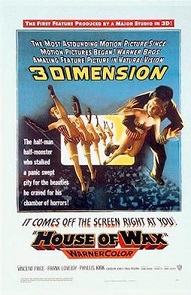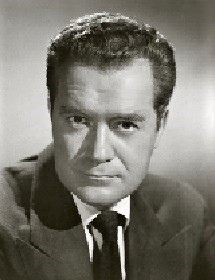
 Night Beat (1950-52) aired “Flight from Fear” on July 31, 1952 as its 104th episode out of approximately 118 (depending on how one counts). Some 80 episodes are estimated to remain in circulation. This radio noir “detective” show featured film–-and later TV–-star Frank Lovejoy (1912-1962) as Randy Stone, the night beat reporter for the fictional Chicago Star newspaper.
Night Beat (1950-52) aired “Flight from Fear” on July 31, 1952 as its 104th episode out of approximately 118 (depending on how one counts). Some 80 episodes are estimated to remain in circulation. This radio noir “detective” show featured film–-and later TV–-star Frank Lovejoy (1912-1962) as Randy Stone, the night beat reporter for the fictional Chicago Star newspaper.
This is only the 8th episode of Night Beat we have showcased, the first being “The Devil’s Bible” from July of 2013, and the last being “Long Live the Clowns” from August of 2022. So a bit of background is in order for newcomers. While well received, Night Beat ran for a modest two years before being cancelled, but not from any fault of its own. It had two factors going against it, both with origins at NBC. The time for a new radio show, and for a network to pour money into it, wasn’t the best. The early 1950s was becoming a growth spurt for the relatively new medium of television, and advertisers realizing its much larger potential audience were diverting their ad dollars away from radio and into this promising new market. Secondly, and for whatever reason, NBC around this time had a reputation for not supporting many of its shows with in-house advertising around the country, or allowing them the benefit of stable time slots so audiences could plan on listening to their favorite shows at a regular time. Both of these factors had a role in Night Beat‘s short life span. NBC would move it from one day of the week to another and at a different nightly time slot, without notice or fanfare, making it difficult for its audience to follow. Thus, while the show was a success, it was in spite of NBC, not because of anything its parent network did to support it.
As noted above, Frank Lovejoy portrayed Randy Stone, the night beat reporter for the fictional newspaper, the Chicago Star. He wasn’t the show’s first choice, however. Noted film actor Edmond O’Brien played Stone in an audition episode, but the censorship watchdogs that had for a long time been active in radio (so one theory goes, true or not) felt O’Brien’s hardcore, gritty characterization of Stone to be too stark for younger listeners, so decreed that Night Beat would have to air in a later time slot (after 9:30 PM) if it was to be given a green light. Rather than moving their new show in the making to a late night venue (with fewer listeners and thus fewer potential ad dollars spent), they would soften the Stone character. Enter Frank Lovejoy, with a voice historians would later place in the top ten of the most distinctive voices in radio. Lovejoy also brought his own sense of down to earth humanity and heartfelt compassion to the role (which he did to all of his radio roles, some 3,000 productions during his radio career), and Night Beat had its winning formula.
Lovejoy was a well known and respected film actor in the 1940s and 50s, having supporting or major roles in more than two dozen films, a scant few of many worth mentioning being 1949’s In a Lonely Place (starring Humphrey Bogart), and the title role in the classic 1951 noir crime thriller I Was a Communist for the FBI. Lovejoy featured prominently in several world War II and/or Korean War films, the most high profile probably his co-starring role with James Stewart in 1954’s Strategic Air Command. Of interest to SF genre fans is Lovejoy’s role as Lt. Tom Brennan opposite Vincent Price in the 1953 3D horror flick House of Wax (the first color 3D film to be released by a major American studio, and the first in a regular theater setting to offer stereophonic sound).
“Flight from Fear” begins with a sports column for the Chicago Star that has been altered pre-press without the columnist’s knowledge. It involves the curious case of a young male athlete who handily beats records in his particular sport yet refuses to try out for the upcoming Olympics. Why a well-liked and long-time fellow employee at the Star has taken it upon himself to delete references to the young athlete leads us back to the 1936 Berlin Summer Olympics and the political climate at the time. The story then moves forward to the story’s present, and illustrates what any number of people during that earlier time must have had to navigate in order to survive, or ensure the survival of someone they loved. How all this intriguing backstory relates to the young athlete and his reluctance to try out for the Olympics is the crux of this story, explains the long-time Star employee’s interest in the boy, why he changed the sports writer’s column to preserve the youth’s anonymity, and why some may feel that perceived ghosts from the past make it necessary to live life in a continual “Flight from Fear,” for it also (surprisingly) examines a politically controversial issue much in the headlines today, which shows, if nothing else, how this issue—in one form or another—has many faces. So just who is this young athlete and why does he feel he must remain anonymous? Set aside a few minutes and enjoy this insightful tale to learn the answers.
(The linked CD at top includes this week’s episode and 19 others.)
Play Time: 27:37
{Airing on a Thursday evening on the last day of July in 1952, “Flight from Fear” was still on the minds of the neighborhood gang the next morning as they set off for the corner newsstand for some mid-summer adventures of their own, albeit in the pages of some of their favorite magazines. Famous Detective Stories (1938-57) survived a handful of name changes over its 20-year existence which meant it had to be doing something right for readers to keep finding it. One reputable source notes that it was “one of the very last of the detective pulps.” It was a quarterly in 1952. Famous fantastic Mysteries (1939-53) was edited by Mary Gnaedinger and found its success by reprinting classic stories of a scientific and fantastic nature from decades past, a great boon to fans of all ages who had missed them in the early days of the struggling magazines, and before the regular occurrence of paperback collections. fantastic Adventures (1939-53), as we have noted previously when covers of this pulp were selected for this feature, was published by Raymond A. Palmer, who founded it as a companion magazine to the older and more well known flagship SF pulp, Amazing Stories. His new magazine ran lighter, frothier fantasies at first, but well into the 1940s was running much the same sort of story as did Amazing, but with an even more pronounced “fantastic” bent. It was a monthly in 1952.}
[Left: Famous Detective Stories, 8/52 – Center: Famous fantastic Mysteries, 8/52 – Right: fantastic Adventures, 7/52]
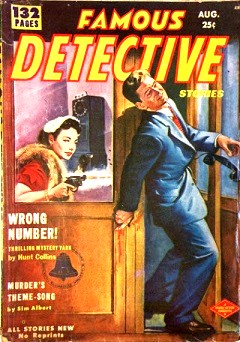
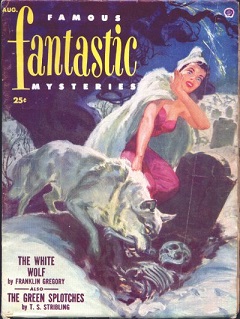
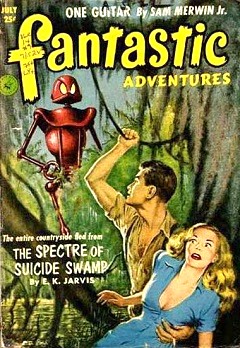
To view the entire list of weekly Old Time Radio episodes at Tangent Online, click here.
